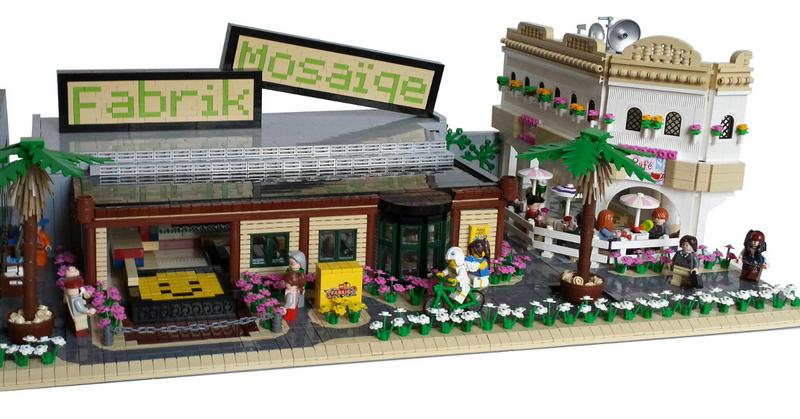Modulex: The Short-Lived 1963 LEGO for Architects
By | September 5, 2019

We've all seen impressive Lego models of buildings and cities, but there was once a name for Lego architecture: Modulex. In 1963, the company began selling a slightly different version of its eponymous modular plastic bricks. Called Modulex, these Legos were intended to enable ambitious Lego fans to build structures that more closely resembled human architecture, by allowing for greater detail and a more precise scale.
Modulex was an interesting attempt -- but it failed.
The Trouble With Legos

The company that would become Lego was founded in 1932 in Billund, Denmark, and in 1947 began producing plastic toys. In 1958, Godtfred Kirk inherited the company, patented the brick design and began producing the building sets we know today. As Lego grew, they started to include building instructions with their sets.
Lego sets at that time consisted of what we'd call the basic bricks today. So while there were instructions for building a house, the house wasn't realistically-proportioned. If you add a staircase to your house, the results get even worse -- each step in your staircase is about half the height of your house's door.
In the early '60s, Godtfred Kirk had this exact revelation -- he was trying to build a model of a house, but the bricks he had to work with were not conducive to a realistic result.
Meet The New Bricks

Kirk decided to do something about this problem -- so he created Modulex, which became its own company.
Modulex bricks differed from the original Legos in several ways. A Modulex brick was 5/8 the size of a standard Lego brick. Because of the size difference, the Modulex bricks were not officially compatible with Legos. The sets included architectural pieces such as windows and also had unusual elements including letter blocks and glue. Modulex blocks were adaptable in ways that Legos were not, allowing for interesting modeling possibilities. Later, the pieces were labeled with an “M” on the stud instead of the familiar “LEGO”.
A System For Architects That Doesn't Catch On

Modulex was marketed to architects, but it didn’t catch on, with one exception: Finnish architect Eero Saarinen, who designed the TWA terminal at JFK and the St. Louis Gateway Arch. Modulex’s failure to find success in architectural applications occurred for a few reasons. The design of the pieces lend themselves to more clunky architecture, even though designers found ways to create curves by gluing the pieces together. Modern architecture rarely uses brick and mortar, which would be much more suitable for Modulex. Marketing was another reason for Modulex’s failure in their intended market. Their strategy led to the interpretation that they were out of touch with modern architectural needs. However, industrial planners did find the system useful and this was the first commercial success for Modulex.
Modulex Continued To Evolve

Modulex no longer produces the sets that they began with, but the company began a new life: as a fairly successful sign company.
The Continued Uses For This Short-Lived Concept

Some people have found ways to make Modulex compatible with Lego. Today, the Modulex blocks are collector’s items and can cost quite a bit. Individuals still use the blocks to create models, and revived interest in them led to brief rumors that the company was going to start producing them again. However, these plans were cancelled, making the test bricks that they produced quite rare. Meanwhile, Lego, still in pursuit of diverse markets, has released architectural sets which they have marketed to adults.
